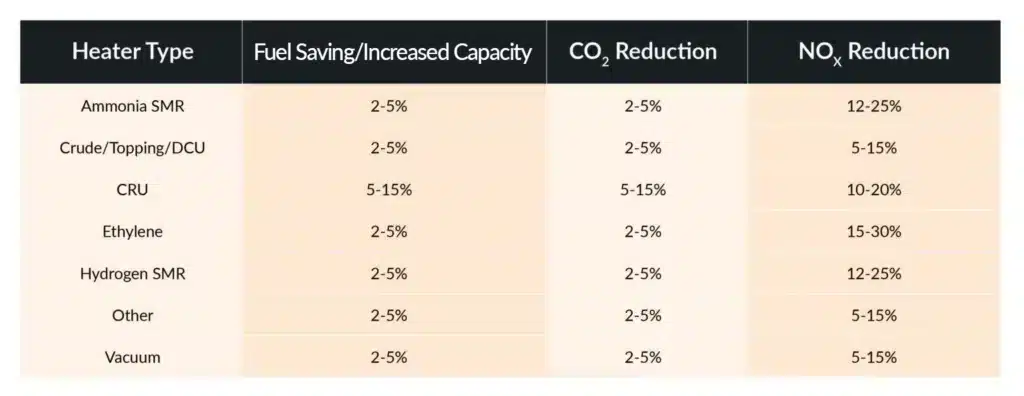Fired Heater and Furnace Thermal Efficiency Study
The Purpose of a Thermal Efficiency Study
The purpose of an IGS Thermal Efficiency Study is to identify opportunities for improved processing efficiencies. It will pinpoint operating limitations or bottlenecks compared to design specifications, which can be addressed by leveraging IGS Solutions to enhance reliability, conserve energy, increase throughput, and reduce emissions.
The Process
Our team of process engineers and fired heater experts will review the furnace or fired heater‘s design data to understand its intended operation. They will then analyze the current operational data to assess its actual performance. In some cases, a comparison between design and operational data with IR images will also be made. Following this, a series of calculations and algorithms will be executed to quantify the potential benefits for the specific furnace or fired heater.
The Report
The plant receives a report outlining the achievable efficiency benefits in relation to the plant’s objectives. These benefits can manifest as fuel savings and emissions reductions, as well as increased capacity and throughput. Sample benefits for various types of furnaces and fired heaters are detailed below.
The report will additionally offer recommendations for technologies that can facilitate the realization of these efficiency gains. Upon request, a proposal can be included, featuring commercial information detailing rates of return and payback resulting from the adoption of the suggested efficiency technologies. The proposal will also encompass the scope of work, a timeline, and the progression of tasks.
Typical Benefits Achieved
What is a Flexible Benefit?
A flexible benefit entails the ability to transition between capacity increases and fuel reduction based on the current requirements of the plant. As an illustration, a refinery can achieve a 7.2% production increase, generating an additional $14.6 million per year in operating profit. Subsequently, the refinery can transition to a lower carbon operation, resulting in a $1.3 million reduction in annual fuel usage.
How Long Does the Study Take to Complete?
The timeframe for completing the Thermal Efficiency Study typically ranges from 2 to 4 weeks, contingent upon availability and accuracy of operational data.

Recommended Technologies
The report assesses efficiency gains in both the radiant and convection sections. For the radiant section, recommendations may include utilizing a high emissivity refractory coating or a thin-film radiant tube coating, depending on the fired heater’s specifications. In the convection section, if fouling is observed, the report might suggest employing a robotic cleaning service.
IGS Experience
With over 40 years of experience, Integrated Global Services (IGS) specializes in optimizing the efficiency of fired heaters and furnaces across the globe. Leading refineries, petrochemical plants, and chemical producers rely on IGS to provide sustainable performance enhancements crucial to their profitability, energy efficiency, and environmental, social, and governance (ESG) goals. Read case studies to learn more.
Schedule Your Complementary Thermal Efficiency Study
IGS is here to provide information, answer questions and create an effective solution for your needs.

